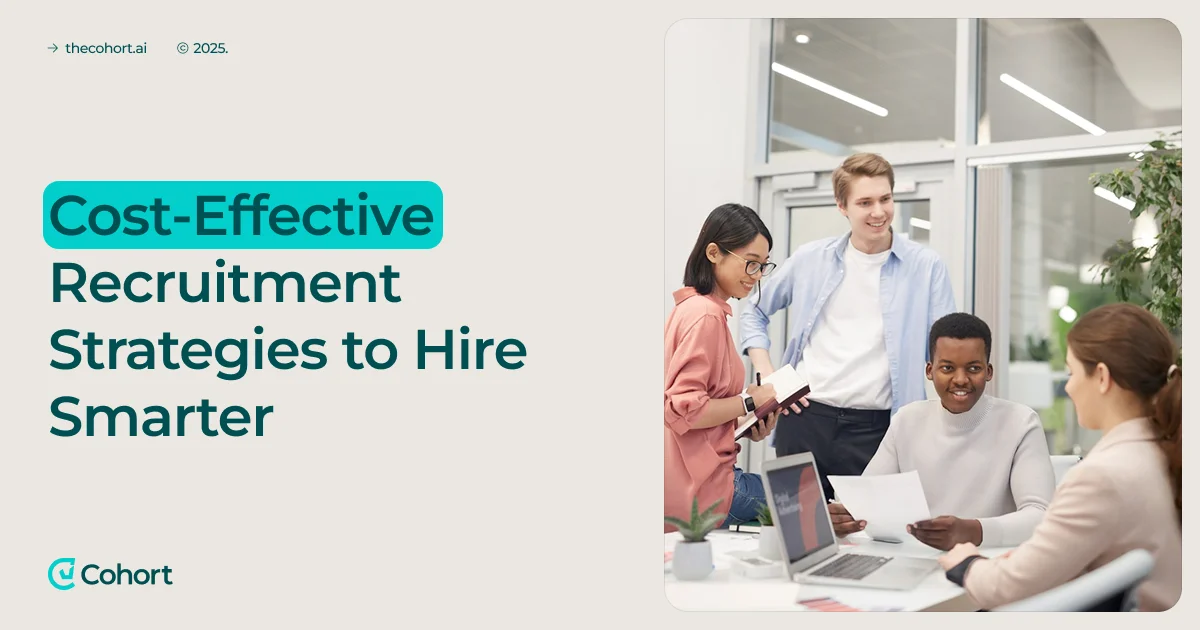Are you tired of paying for job ads that don’t deliver?
Hiring shouldn’t drain your budget. The right strategies cut costs and put the right people on your team faster.
With a smart and strategic approach, you can streamline hiring with cost-effective recruitment strategies to cut cost-per-hire and hire faster.
In this article, we’ll explore 8 cost-effective recruitment strategies to help you hire smarter and more efficiently.
Key takeaways
- Employee referrals deliver faster, cheaper, longer-lasting hires
Referrals move through hiring 55% quicker, save around $3,000 per hire, and stay 70% longer. A structured program with rewards, easy submissions, and recognition keeps referrals flowing.
- Social media recruiting expands reach at low cost
Platforms like LinkedIn, GitHub, and niche communities help you connect with talent directly. Sharing culture-driven content and tapping employee networks can slash cost-per-hire by up to 70%.
- A strong employer brand attracts talent like a magnet
Companies with a compelling brand see 50% lower hiring costs and 28% lower turnover. Quick communication, authentic culture stories, and employee reviews make your brand stand out.
- Internal mobility is a hidden cost-saver
Promoting from within costs far less than hiring externally and boosts retention by 70%. Training programs, clear career paths, and mentorships show employees their future at your company.
- Cohort AI makes smart recruiting effortless
With AI-powered sourcing, automated assessments, and personalized outreach, Cohort AI finds and engages top candidates before they hit the job boards. The result: 40% faster hires and hours saved every week.
1. Leverage employee referral programs (a proven cost effective recruitment strategy)
Employee referral programs are one of the most effective and budget-friendly ways to hire great talent.
Research shows that referred candidates move through the hiring process 55% faster and save companies around $3,000 per hire in recruitment costs.
Even better, referral hires tend to stay with the company longer, remaining on average 70% longer than non-referrals.
✅ How to make it work
Set up a clear, structured referral program with defined rewards. For example:
- Offer a $500–$1,000 bonus for any referral who gets hired and stays for at least six months.
- Make submitting referrals simple with an internal portal or quick form.
- Regularly remind employees about urgent or high-priority roles.
- Show appreciation with public recognition or small thank-you gifts for successful referrals.
2. Embrace social media and online recruiting
Platforms like LinkedIn, Facebook, and even niche communities give you direct access to modern candidates. Posting job openings, showcasing your company culture, and encouraging employees to share opportunities can dramatically expand your reach at little to no cost.
Ericsson, for example, cut its cost-per-hire by 70% simply by using social media recruiting and employee advocacy.
Instead of relying on expensive job boards or agencies, the company tapped into employees’ networks and engaged with online industry groups to attract qualified candidates.
Here is what they did:
- Established a centralized employer brand campaign called "You + Ericsson" focused on transforming the company's image and attracting talent.
- Shared content that provided a behind-the-scenes look at Ericsson’s culture, projects, and working environment, including product backstories and interactive coding challenges.
- Launched campaigns like "Ericsson Sees the Real You" to highlight diversity and inclusion, empowering employees to share personal stories.
- Leveraged employee-generated content through photo challenges such as "Instagram Takeovers" showing day-in-the-life experiences.
✅ How to turn social media into your recruiting engine
- Strengthen your company’s presence on LinkedIn and join relevant industry groups where potential candidates are active.
- Explore niche communities, such as GitHub for developers or Dribbble for designers, to reach specialized talent pools.
- Share regular updates about your culture, team wins, and open roles to spark interest.
💡 Pro tip
Searching for the right talent and consistently promoting your brand across various platforms can consume countless hours every week. With Cohort AI’s Sally the Scout, you don’t have to do the heavy lifting, as Sally crawls platforms like GitHub, LinkedIn, Stack Overflow, and Kaggle to spot and score high-signal technical talent before they hit the job boards.
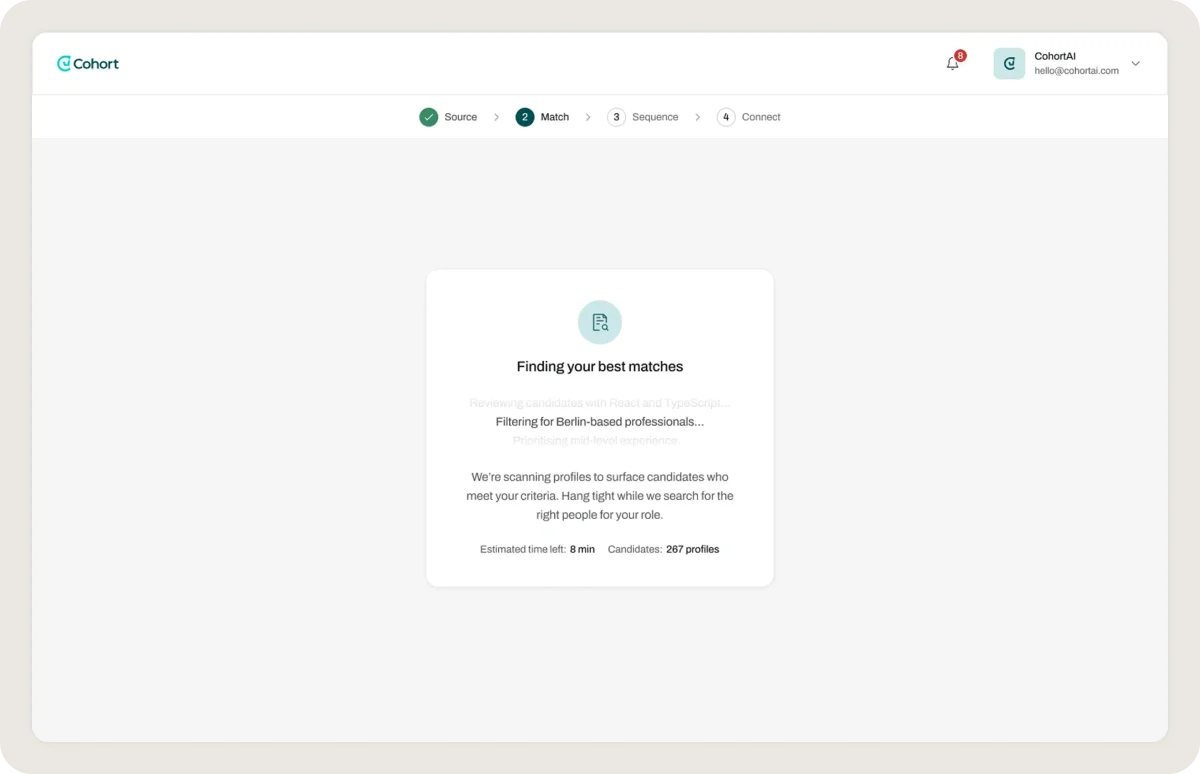
This means you can strengthen your employer brand on social channels while Sally quietly builds your pipeline in the background, saving you 20–30 hours a week and giving you access to the talent others haven’t even seen yet!
3. Invest in employer branding to attract talent
When job seekers already view your company as a place they’d be proud to work, they’re more inclined to apply without the need for heavy persuasion.
Over time, this “magnet effect” reduces both hiring costs and the effort required to win over top candidates.
In fact, research shows that companies with a strong employer brand enjoy an average 50% lower cost-per-hire. The savings come from several angles:
- You attract more organic applications
- Spend less on ads and recruiters
- See higher offer acceptance rates
Moreover, a positive brand improves retention by reducing turnover by about 28%, helping avoid re-hiring costs.
✅ How to make it work
- Respect candidates’ time by responding quickly, keeping them updated, and setting clear expectations. A fast, transparent process leaves a far better impression than vague promises.
- Ask employees for honest reviews on Glassdoor or Indeed. Recognize those who contribute, remind everyone it’s voluntary, and show how feedback leads to real improvements.
- Bring your culture to life by sharing team wins, community projects, and workplace traditions through newsletters, LinkedIn, and your career page so candidates get a genuine feel for the company.
4. Internal hiring and mobility
Sometimes the best and most cost-effective hire is already working for you. Internal hires are already familiar with your culture, processes, and expectations, which means they can often hit the ground running.
A study by the Josh Bersin Company found that hiring externally can cost 3–5 times more when you factor in search costs and longer ramp-up periods.
On the other hand, internal mobility not only reduces these costs but also strengthens retention and morale. Employees who are promoted or offered lateral opportunities are 70% more likely to stay long term than those hired externally.
✅ How to make it work
- Establish a clear internal mobility policy. For example, post open roles internally for one to two weeks before searching externally.
- Invest in training and development programs that prepare employees for advancement, such as leadership workshops or cross-functional projects.
- Create structured pathways like career ladders or mentorship programs to show employees how they can grow within the company.
- Encourage managers to actively identify and develop high-potential team members for future roles.
🧠 Example: Salesforce – “Career Connect” and “Career Agent”
Salesforce has built AI-powered internal tools to help employees identify internal roles, map out skill gaps, and get personalized recommendations for career moves and upskilling.
These tools include "Career Connect," an internal talent marketplace that uses AI to match employees to roles, gigs, and learning opportunities based on their existing skills and job history, and "Career Agent," which provides career suggestions via Slack.
This way they:
- Filled 50% of new roles internally within one quarter, significantly boosting internal mobility.
- Engaged 74% of employees in using the platform during the initial pilot phase.
- Enabled 40% of employees to enroll in AI-recommended upskilling courses to grow relevant skills.
- Helped employees discover job opportunities they were unaware of before, facilitating career growth and reskilling.
- Aligned employee career goals with company objectives, improving workforce agility, job satisfaction, and loyalty.
5. Cut costs with recruiting tech and skills-based hiring
More and more companies are turning to AI tools and skills-based hiring to make recruitment faster, cheaper, and more accurate. Here is how they work:
🟢 Applicant Tracking Systems (ATS)
An ATS automates time-consuming tasks, such as posting jobs, scanning resumes, and scheduling interviews, which helps eliminate repetitive manual work.
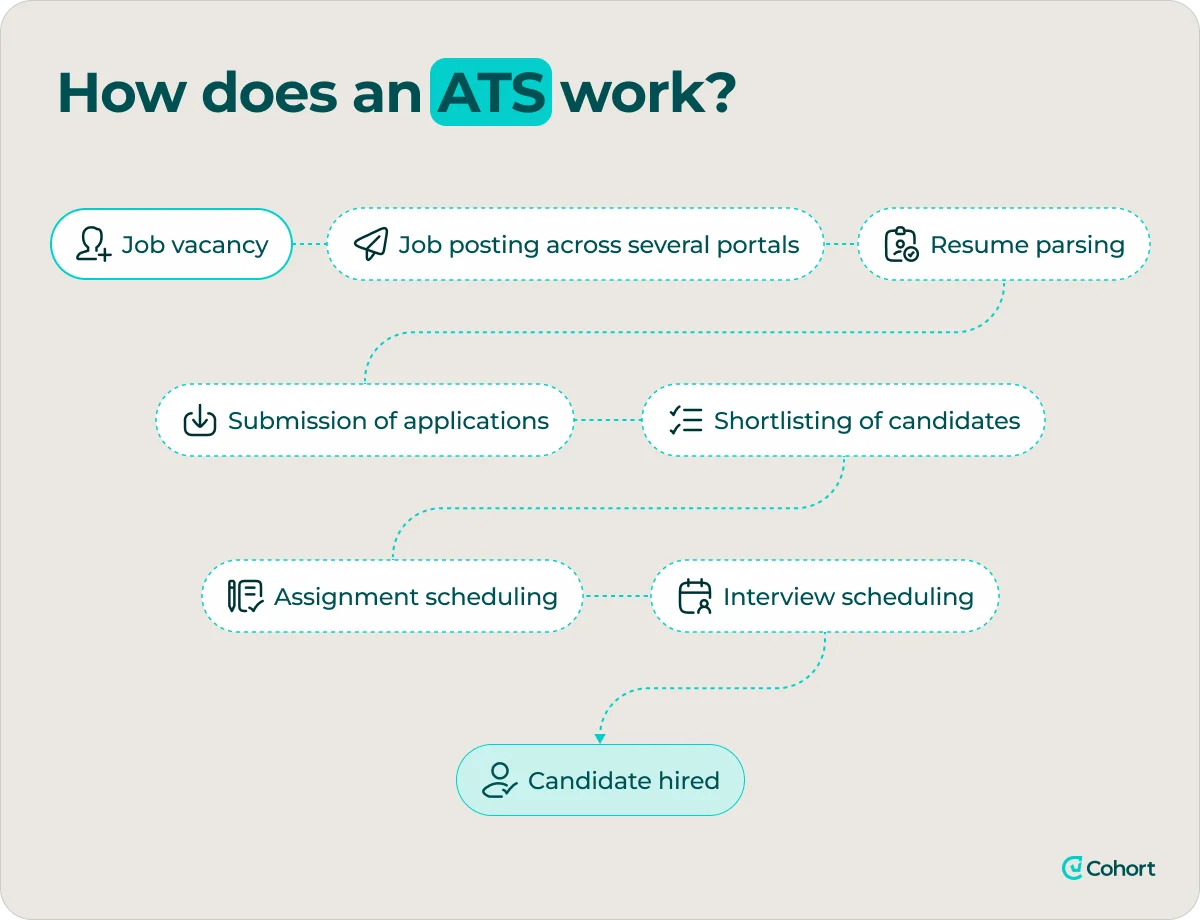
By automating these steps, recruiters can focus on building stronger relationships and making more informed hiring decisions. Companies that adopt ATS solutions report up to a 30% reduction in overall hiring costs.
🟡 Skills-based hiring
Shifting the focus from credentials to demonstrated skills allows employers to better identify candidates who can actually perform the work. Online skills assessments create a more accurate picture of fit and reduce the likelihood of costly mismatches.
Organizations using this approach typically spend about 30% less on recruitment compared to traditional methods.
🔵 AI-driven interviewing
AI tools such as chatbots and automated video assessments streamline the interview process by quickly screening and ranking candidates. This speeds up decision-making and ensures recruiters spend time with the most promising applicants.
Companies leveraging AI in interviewing have seen a 67% drop in hiring costs and a 45% faster time-to-hire.
💡 Pro tip
While some organizations juggle multiple tools for outreach, screening, engagement, and shortlisting, the smarter approach is to use an all-in-one platform. This way, you save costs, reduce complexity, and get a more affordable hiring process. For example, with Cohort AI, you get:
- One place to manage the entire hiring funnel.
- Built-in agents that automate outreach, screening, and engagement.
- Pre-vetted, top candidates delivered in as little as 3 days.
- Less tool-hopping, faster decisions, and fewer drop-offs.
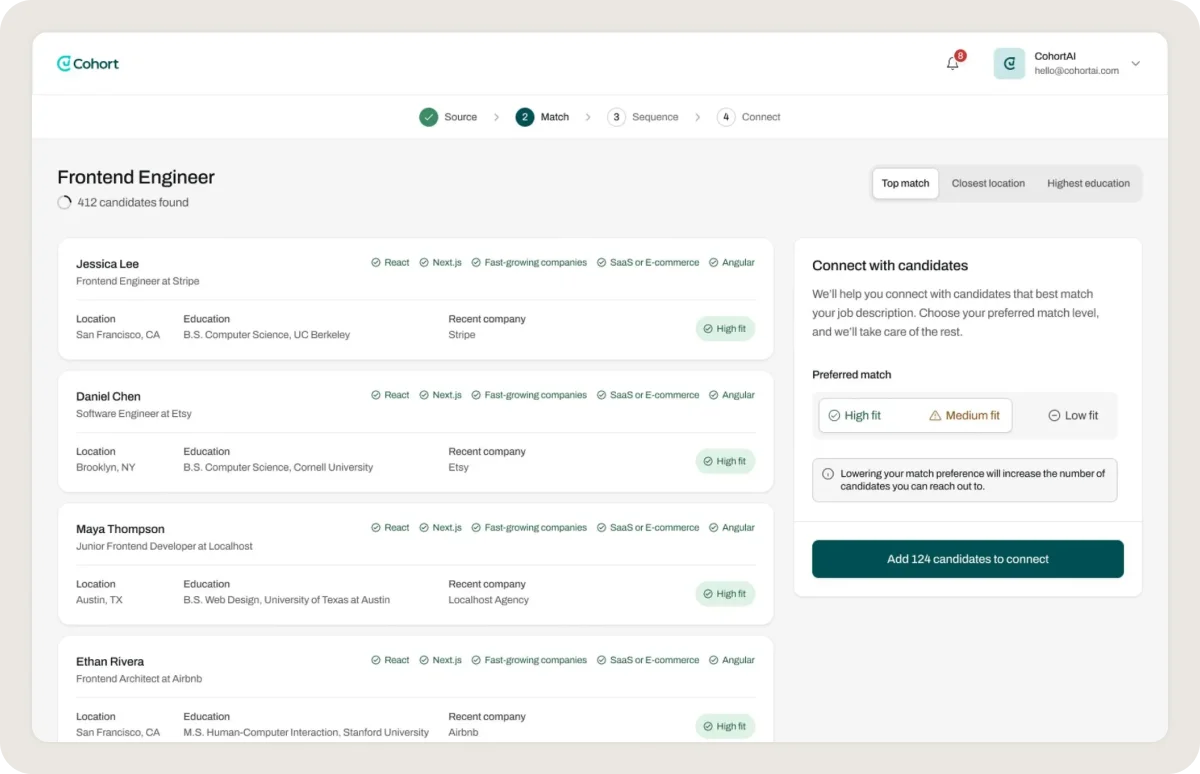
6. Build a talent pipeline
Did you know that advertising a vacancy averages $500 per day, while the average time to fill a role is about 44 days? For many, the process can drag on for 2-4 months, pushing ad spend alone into the tens of thousands of dollars.
A smarter approach is to build a pool of pre-qualified or interested candidates you can tap into whenever a role opens.
This pipeline might include promising past applicants, people who’ve joined your talent community, or connections made at networking events and career fairs.
✅ How to make it work
- Use your ATS to tag or flag strong candidates who were runners-up for past roles, and reach out when new opportunities arise.
- If you don’t have an ATS, even a simple spreadsheet or CRM can help track promising candidates.
- Create a newsletter or LinkedIn group to share updates, job alerts, and career tips with interested candidates.
- Host occasional virtual meetups or webinars on industry topics and invite past applicants to keep them engaged.
- Reach out to your talent pool first whenever a role opens, before spending on job ads.
7. Utilize internships and early-career programs
Internships, co-ops, and apprenticeships are powerful ways to build a pipeline of future full-time hires at a lower cost. While these programs require some upfront investment in stipends and training, they often deliver a strong return when you convert top interns into employees.
According to the National Association of Colleges and Employers (NACE), 53% of interns receive full-time job offers, and many accept them.
Better yet, interns who convert to employees tend to stay longer. The same study found they were 16% more likely to still be with the company after a year compared to external hires, with stronger retention even at the five-year mark.
✅ How to make it work
- Treat your internship program as a recruiting tool, not just a source of temporary help.
- Design meaningful projects that let interns showcase their skills and cultural fit.
- Pair interns with mentors and include them in team events to build stronger connections.
- Keep in touch with past interns through updates or invitations, as many return when roles open later.
- Partner with universities, colleges, or vocational programs to establish a steady pipeline of candidates throughout the year.
8. Conduct virtual interviews and embrace remote hiring
Moving interviews online eliminates travel costs for both candidates and your team, while also making scheduling faster and more flexible.
Nearly 45% of recruiters report that video interviews reduce hiring costs, and one study found that switching to virtual interviews saves up to 67% of travel-related recruiting expenses, such as flights and hotels.
Beyond logistics, virtual hiring widens your talent pool since geography is no longer a limitation. More applicants mean faster fills and better matches, which lowers the indirect costs of long vacancies or mismatched hires.
✅ How to make it work
- Incorporate video interviews into your hiring funnel using tools like Zoom, Microsoft Teams, or one-way interview platforms.
- Use virtual screenings early on, so in-person interviews are reserved for final candidates only.
- Provide candidates with clear instructions or a short FAQ to ensure a smooth virtual interview experience.
- Advertise positions as remote or hybrid whenever possible to increase applicant volume and speed up hiring.
- Even for on-site roles, consider offering remote interviews or flexible onboarding to avoid losing qualified candidates.
Common mistakes and how to avoid them
Even with the best cost-saving strategies, a few common mistakes can undo your hard work. Keep these in mind as you refine your hiring approach:
🔴 Chasing “cheap” hires at the expense of quality
Hiring the wrong person can cost as much as twice the employee’s annual salary, once you factor in turnover, retraining, and lost productivity.
It’s smarter to invest time in thorough vetting, such as assessments and reference checks, than to rush in someone just because they’re inexpensive or immediately available.
🔴 Neglecting the candidate experience
When candidates feel ignored or dragged through a slow process, it damages your brand and often leads to rejected offers. In fact, 48% of candidates decline job offers because of slow feedback after their final interviews.
Even simple steps like timely updates or automated emails are better than silence and can strengthen your reputation with both current applicants and future prospects.
🔴 Not tracking metrics and ROI
Without measuring outcomes, you can’t know where inefficiencies are draining resources, whether it’s an overpriced job board or an overly complex interview process.
By monitoring key metrics like cost-per-hire, time-to-fill, and new-hire retention, you’ll gain the insight needed to adjust strategies and choose more effective recruiting partners.
🔴 Skimping on onboarding and new-hire support
Hiring costs don’t stop at the signed offer. Poor onboarding often leads to early turnover and a restart of the expensive hiring cycle.
A strong onboarding program, on the other hand, boosts retention and makes it far cheaper to set employees up for success than to replace them too soon.
Hire smarter with the right AI tool
Before you can apply these cost-effective recruitment strategies, you need a tool that makes your process faster, sharper, and more reliable from the very start. That’s where Cohort AI shines.
Instead of piecing together multiple platforms or relying on manual effort, Cohort AI gives you one system that sources, screens, and engages candidates at scale, without draining your budget.
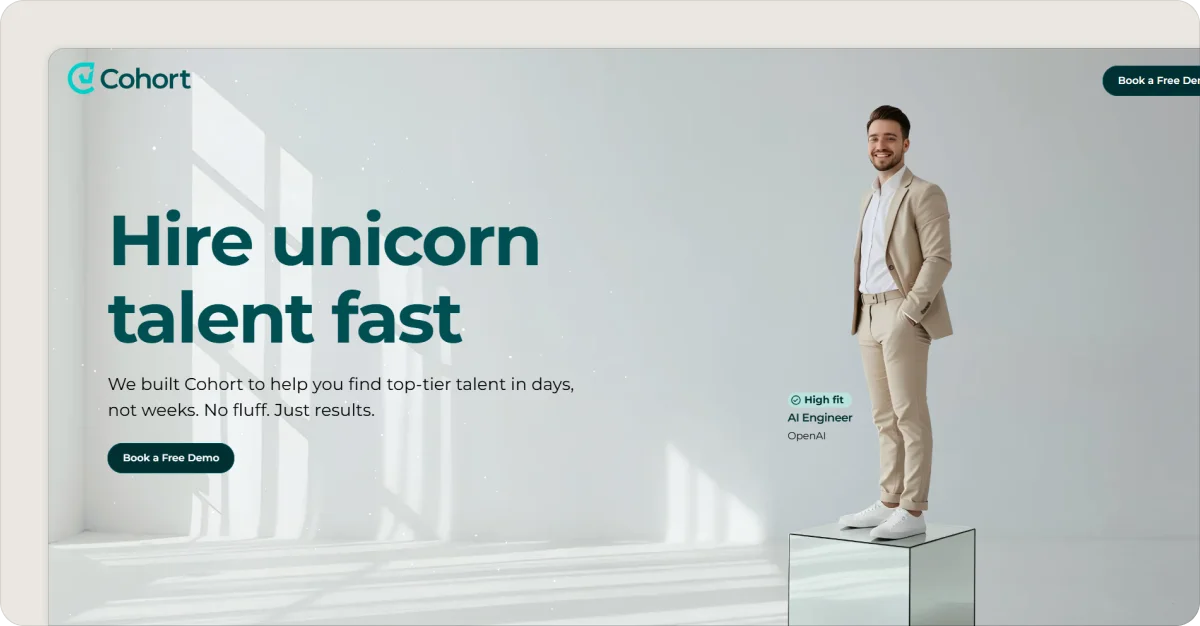
We built Cohort AI after spending thousands on ads and waiting months for the wrong hires. Today you get your top three candidates, vetted by AI and refined by humans, in just days. The system interprets your role and company context in depth, while Talent Architects fine-tune the search so every candidate is a true match. The result is a 40% faster time-to-hire without wasted effort.
Here is how Cohort AI can help you:
- Innovative talent sourcing – Identifies high-potential candidates through skills and demonstrated work, reducing reliance on traditional resume screening.
- Streamlined assessments – Conducts asynchronous, role-specific interviews and evaluates responses against clearly defined success criteria.
- Personalized candidate outreach – Crafts tailored communications aligned with your brand voice and job requirements to engage top talent.
- Enhanced candidate engagement – Automates follow-ups and Q&A to foster trust, improve responsiveness, and minimize drop-off.
- Intelligent candidate matching – Connects skills, behaviors, and working styles to ensure alignment based on how candidates work—not just where they’ve worked.
Book a free demo today and see how Cohort AI makes hiring smarter, faster, and more cost-effective!



